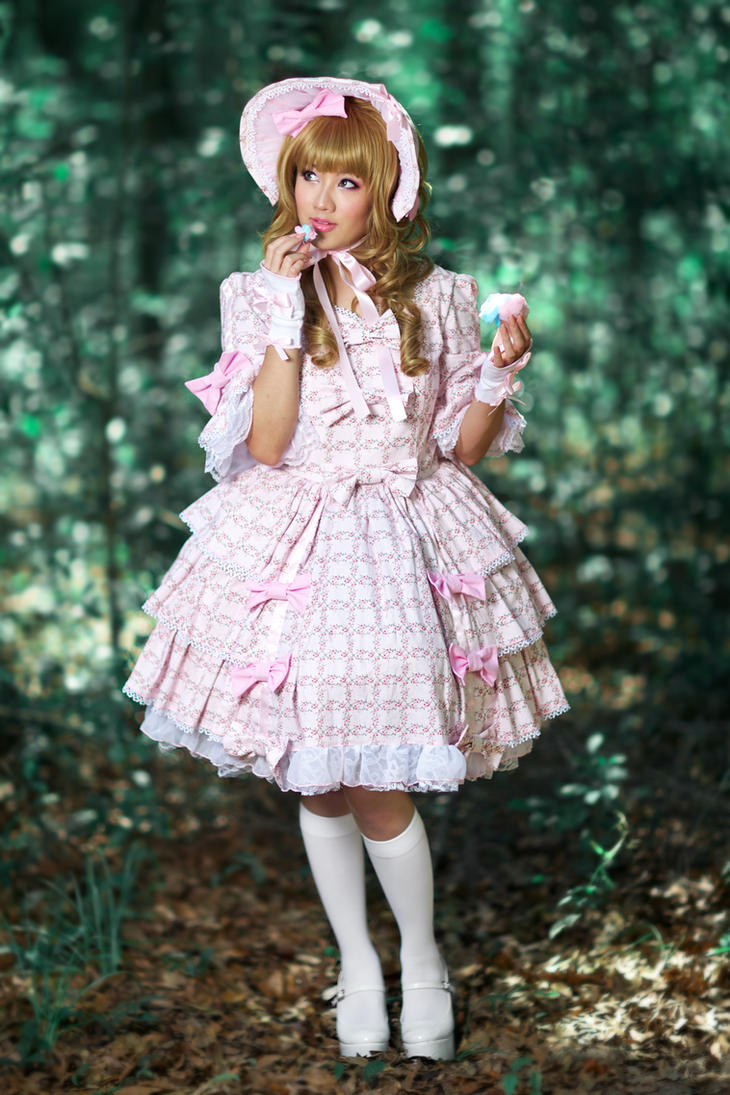Fashion
subcultures are groups organized
around or based upon certain features of costume, appearance, and adornment
that render them distinctive enough to be recognized or defined as a subset of
the wider culture. Collective identification as a group can be self-attributed
or influenced by outsiders. Gender, age, social class, or ethnic identity can
distinguish classification among a subculture. Subcultures often create their
identify by a distinctive definition of themselves that is usually opposite of “mainstream”
beliefs or prevailing fashion of the time. Many subcultures have a dominant way
of dressing that makes them exclusive to their “culture”. While these
subcultures may depend upon fashion to define their existence, many prefer to
orient themselves around the idea of “style” or “anti-fashion,” distinguishing
themselves a Fashion Subculture, which sets themselves apart from the rest of
society. - Chelsea
Buchon & Buchonas
A buchon and buchona are a fashion subculture originating in
Mexico. Due to the ongoing Drug War that Mexico has been battling for nearly a
decade, the lifestyle of drug-traffickers is glamorized by the media
constantly. These men and women look up to drug-traffickers in Mexico because
they provide jobs to the needy therefore they find them inspirational and try
to recreate their looks.
Drug-traffickers have traded their signature cowboy boots and big belt buckles for American and European brands. Brand names like Burberry, Gucci, Ralph Lauren Polo Shirt,
Armani or Ed Hardy worn by several infamous drug traffickers at the moment of
their capture have become trendy in the past few years. A buchon can be identified
by what he wears; Ed Hardy t-shirts with matching caps, satchels, and true religion
jeans. Ralph Lauren Polos are also popular because seven high–ranking drug
traffickers who were arrested over a three–month stretch were seen wearing the
polo with a horseman–with–a–stick emblem.
Women dress the part of a Narco’s girlfriend. They are seen
wearing fake acrylic nails with rhinestones everywhere, Bebe bodycon tees or
dresses, thick headbands, and heavy makeup. They favor brands such as Michael
Kors, Coach, Guess, Bebe, and Armani Exchange.
-Vanessa
Lolita Fashion
There are countless numbers of subcultures with their own unique styles in Japan. Lolita fashion is one of them. Lolita is one of the largest street fashions in Japan and has an active global community. The subculture is characterized by modest, high quality Victorian-era clothing with a “cupcake” silhouette. The most well-known Lolita styles are sweet, classic, gothic, and punk
- Sweet
- Influenced by Victorian and Edwardian clothing
- Lighter colors
- Childlike motifs in designs
- Popular themes: Alice in Wonderland, candy, and classic fairy tales
- Classic
- Mature style of Lolita that focuses on Regency and Victorian styles
- Somewhere between sweet and gothic styles
- Small intricate patterns and muted colors
- Silhouettes include a-line and empire waists
- Gothic
- Darker makeup and clothing
- Red lipstick and smokey or defined eyes
- Punk
- Punk fashion elements
- Motifs that are found in punk clothing
- Tattered fabric, plaids, safety pins and chains
- Short androgynous hairstyles
- Common footwear: boots, Mary Janes or oxfords with platforms
Source: Lolita Fashion
- Ashley
Fashion Subculture – HIPSTERS
Hipsters are everywhere.
Hipsters are a subculture of men and women typically in
their 20’s and 30’s that value independent thinking, counter-culture,
progressive politics, creativity, intelligence, and an appreciation of art and
indie-rock. They reject the culturally-ignorant attitudes of mainstream
consumers, favoring the cutting edge of alternative fashion and lifestyle
trends. Hipsters want to be different, and they do a great job of doing it.
Lovers of irony and indifference, hipsters are connected through a global
network of blogs and shops that push forth a global vision of fashion-informed
aesthetics.
Brands that hipsters love:
·
Keds
·
American Apparel
·
Keds
·
Levi’s
·
Opening Ceremony
·
Band of Outsiders
·
Pendleton
·
Fred Perry
·
Starter
- Leo
- Leo
Fashion Subculture – GRUNGE
Grunge is an overall movement—from fashion to music—that
originated in the 90’s. The grunge movement has no set definition but its
premise lies in rebelling against all aspects of pop culture, similar to that
of hipsters. Grunge combines elements of 1970’s heavy metal (Kiss) with a punk
base of antiestablishment energy. It embodies several characteristics, from
guitar-heavy rock music to the café culture. It is a movement that has managed
to take over and remain lurking at the turn of every corner, whether it is in a
song on the radio or on a person’s fashion choices on the street. It was
Rolling Stone that accredited ‘isolation and inbreeding’ for the origins of
grunge.
Essential Fashion Pieces
to Being Grunge:
·
Distressed denim
·
Flannels
·
Basic white or black tees
·
Army jackets
·
Band tees
·
Leather jackets
·
Ripped stockings
·
Combat boots (Doc Martens)
·
Beanies
·
Bandanas
- Sandy



























